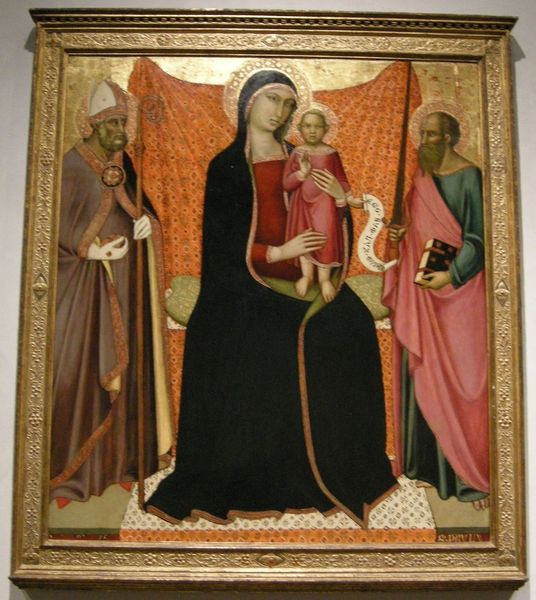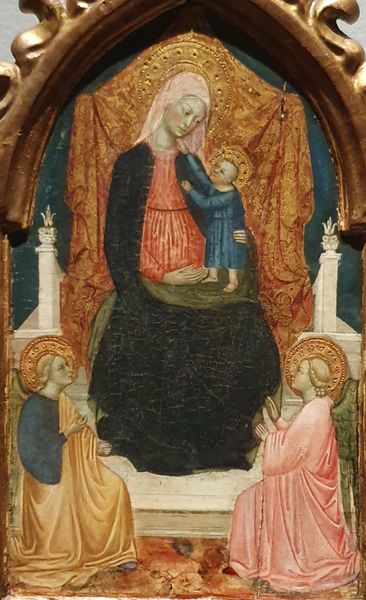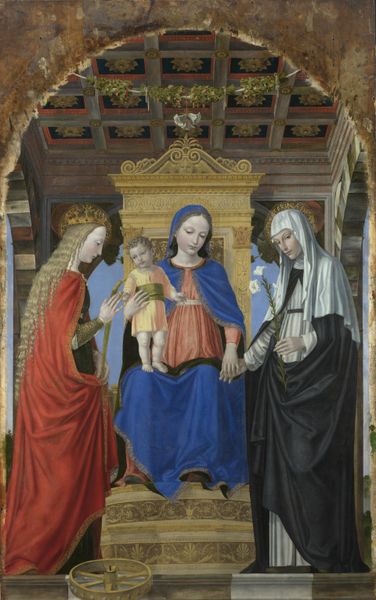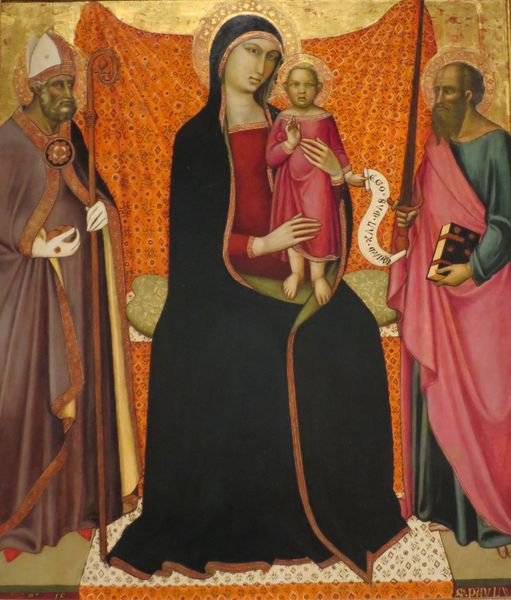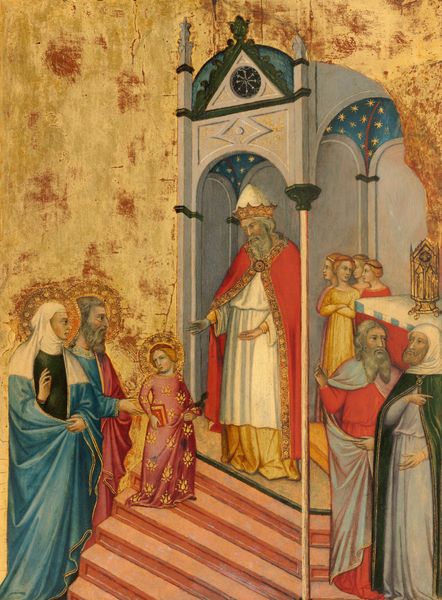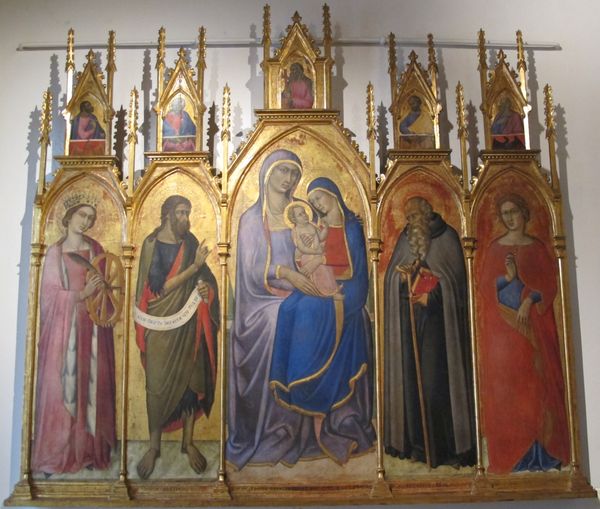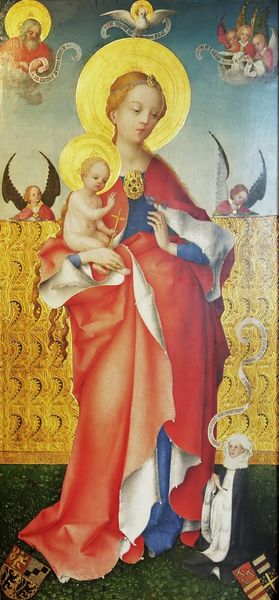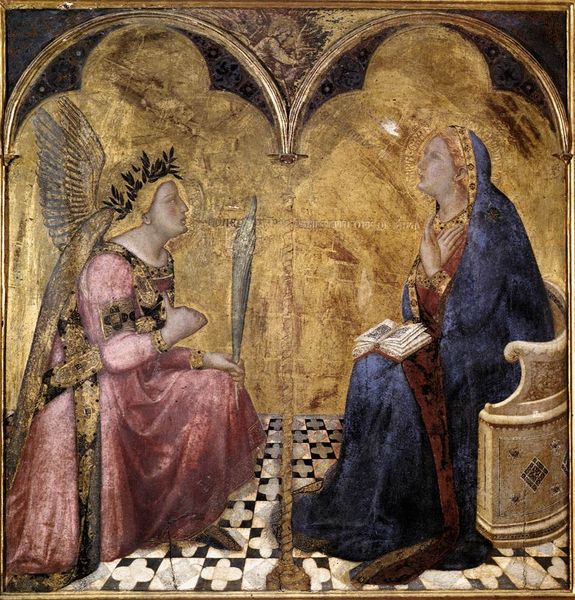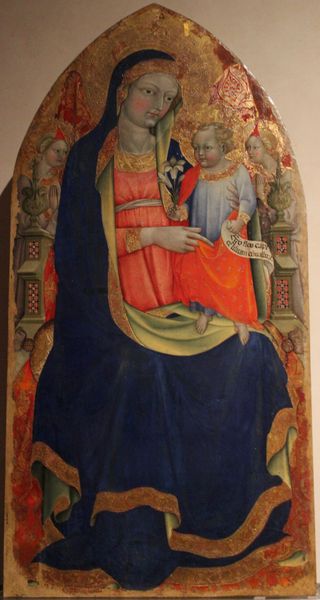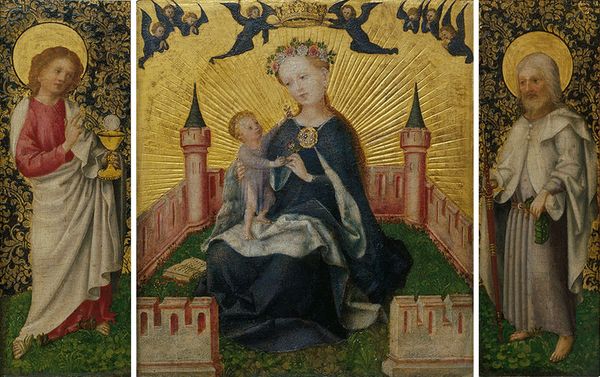
tempera, painting, fresco
#
portrait
#
allegory
#
tempera
#
painting
#
landscape
#
figuration
#
fresco
#
oil painting
#
history-painting
#
italian-renaissance
Copyright: Public domain
Antoniazzo Romano’s ‘La Madonna in Trono Fra I Santi Benedetto E Francesca Romana’ is a fresco, painted directly onto a plastered wall. The artist combined natural pigments with water, applying them to wet plaster so that the colors would bind as it dried. This was a labor-intensive process, demanding speed and precision. Consider the range of colors achieved, from the deep blues of Mary’s robe, created with precious ultramarine pigment made from ground lapis lazuli, to the reds and golds used for decorative elements. The application of these materials would have been a physical endeavor, requiring the artist to work closely with the wall's surface. The fresco technique connects this image to a rich tradition of mural painting, but also to the broader social and economic context of its creation. The value of the materials, the skill required for execution, and the permanence of the medium all speak to the cultural importance of this image. By considering the processes and materials involved, we can appreciate how this artwork is not only a visual representation but also a testament to human skill and ingenuity.
Comments
No comments
Be the first to comment and join the conversation on the ultimate creative platform.
